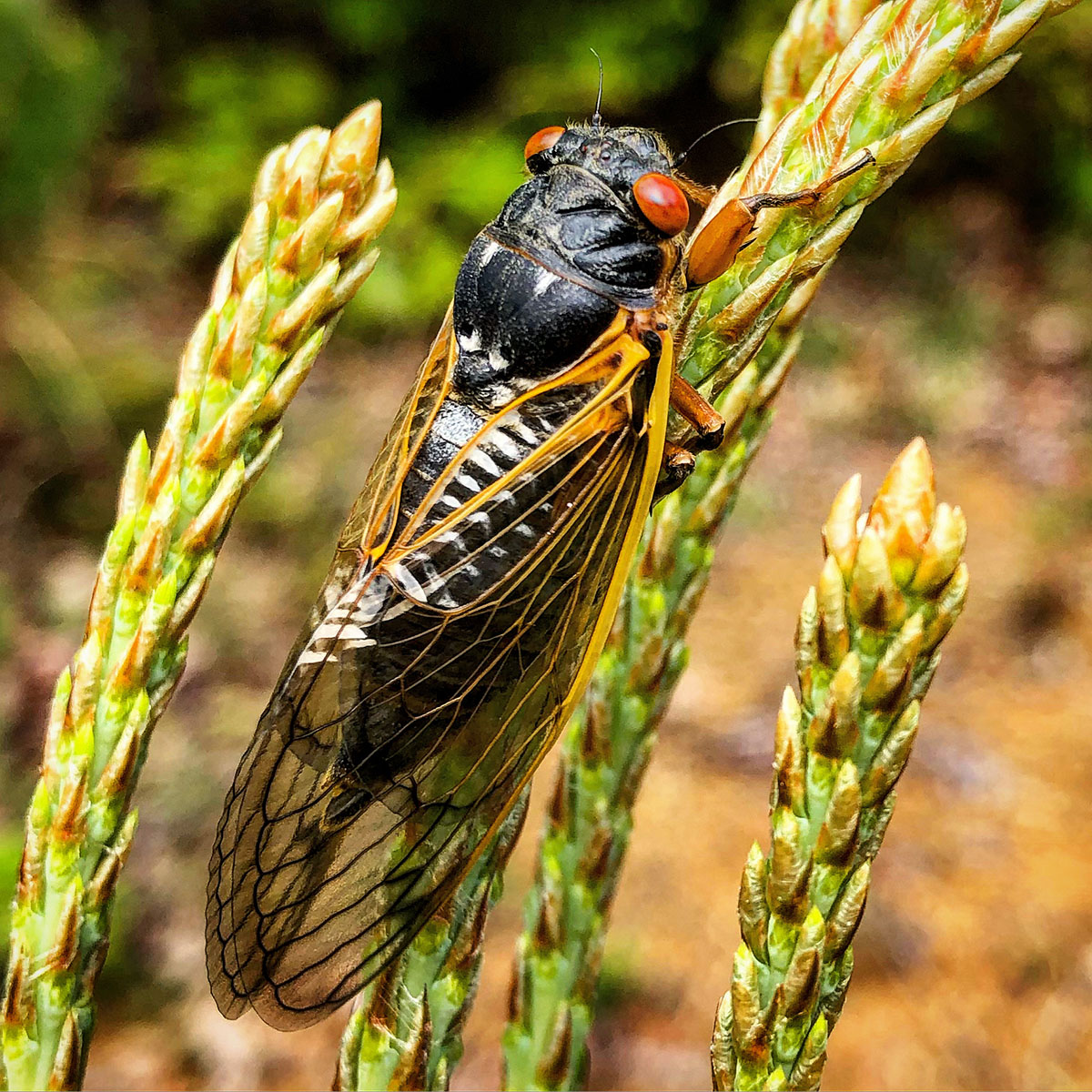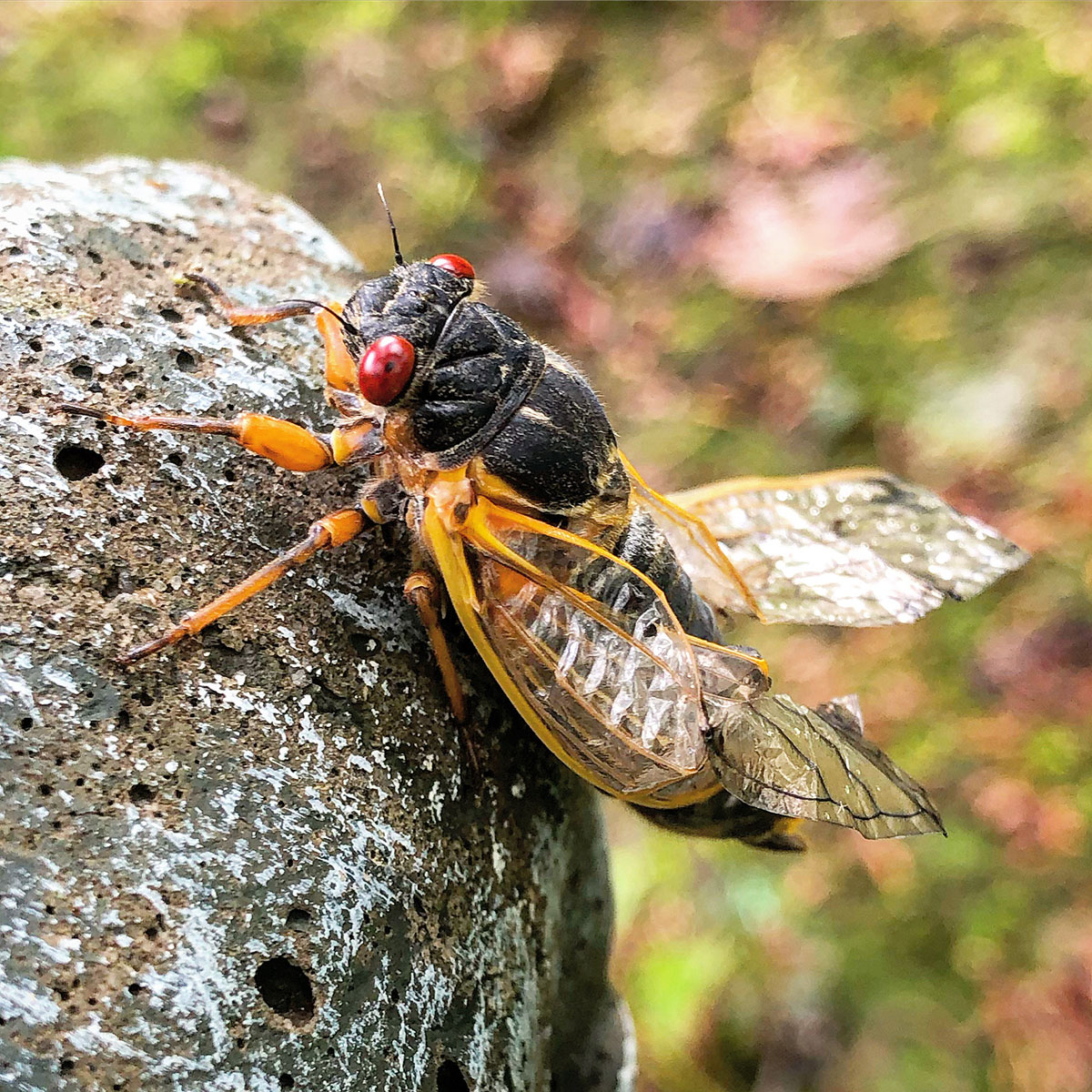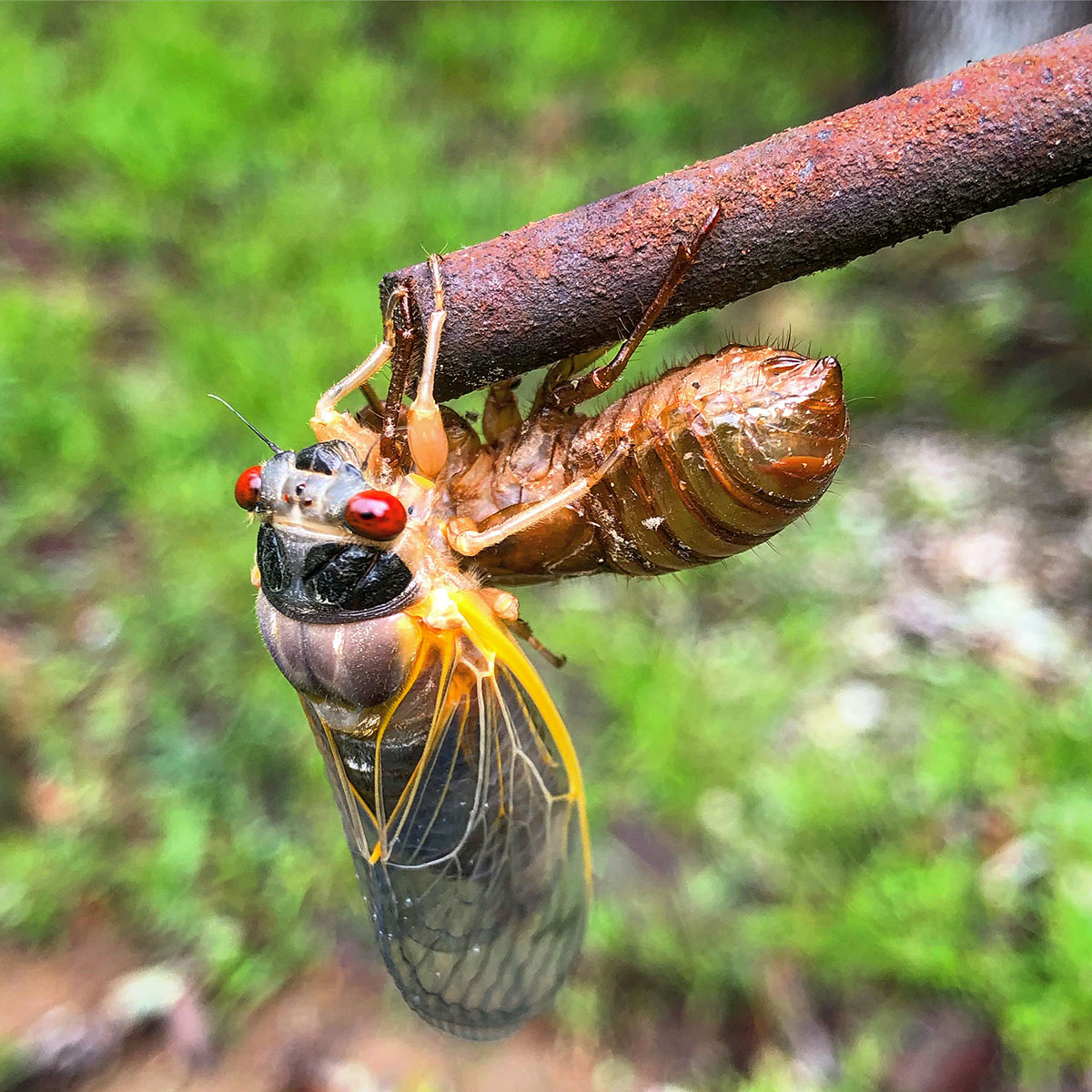An invasion of sorts is happening across the Southeast. Billions of insects have spent the last 13 years living underground, just biding their time while burrowing and dining on liquids from the roots of trees and shrubs. Known as periodical cicadas, they spend nearly their entire lives living beneath the soil, maturing slowly – very slowly – from their larval form into adults.
This year, the Great Southern Brood – known as Brood XIX – of periodical cicadas has reached maturity, and they’re ready to leave the safety of their underground warrens.
Don’t worry. You’ll know when this happens. It’s kind of hard to miss.
With a final molting of their larval exoskeleton, adult cicadas emerge equipped with wings and eager to find a mate. Despite spending the majority of their lives underground, adult cicadas have just six short weeks to accomplish that goal before they reach the end of their lives.
While this particular brood of cicadas is called Brood XIX, it’s actually comprised of several different cicada species whose life cycles have synced together. This evolutionary strategy is meant to overwhelm potential predators — think “safety in numbers” — to offer the cicadas the best chance possible to successfully mate before they are consumed or perish. It also makes this the largest of all periodical cicada broods.


Brood XIX is a 13-year brood, which means they emerge every 13 years, but most cicada broods in the United States emerge every 17 years. This year sees the simultaneous emergence of one of those 17-year broods, Brood XIII, in the northern United States, with some overlap between the two broods in Illinois.
That simultaneous emergence hasn’t occurred since 1803 — and won’t occur again until 2245 — but what once was an unusual occurrence is about to become much more common, says Aquarium Entomologist II Rose Segbers.
“While this is rare for now, it won’t be for the rest of our lives, because Brood XIX will emerge simultaneously with other 17-year broods for the next 100 years,” Segbers explains.
Of the periodical cicadas, there are four species of 13-year cicadas and three species of 17-year Cicadas.
While this year is special, there is never a year without the emergence of cicadas. Other cicada species are called annual cicadas, and they emerge, well, annually.
Typically spending two to five years underground, these cicadas emerge in late summer. Unlike their annual cousins, these insects are colored green. Annual cicadas can be found across the planet, but periodical cicadas are unique to North America.
The emergence of annual cicada broods can mean a veritable feast for insect-eating predators. Birds, fishes, small mammals and even other insects will engage in a feeding frenzy that will end abruptly when the insects reach the end of their life cycle in mid-July.
“Some animals have actually evolved specifically to only eat cicadas, like the Cicada Killer Wasp,” Segbers says.
For those who might be worried about this insect invasion, fear not: cicadas are harmless to humans and serve as an important part of our ecosystem’s food web. The only cause for concern might be on the part of gardeners with very young trees. Cicadas cut open twigs or branches to lay their eggs, which could overwhelm these still-developing plants. This can be avoided by netting the youngest trees until after the cicadas have departed.
Since their life cycles rely on living underground, cicadas are threatened by habitat loss caused by human activity. If you live in an area with recent heavy development over the last decade, which might include construction, tree removal or significant landscaping, you may see fewer cicadas than in more undisturbed locations. Heavy pesticide use can also adversely affect these insects as it seeps through soil.

